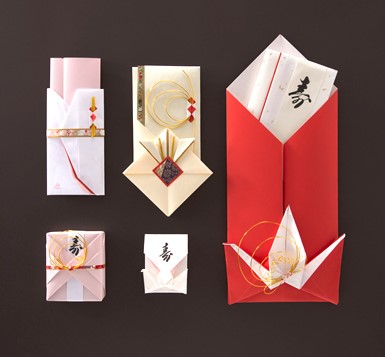The Japanese view wrapping a gift as “wrapping the heart,” and every gift is lovingly cared for with thoughtfulness and consideration.
The first known “wrapping” can be dated back to around 3500 to 3200 BC in the ancient Middle East where hollow clay spheres were molded around tokens and used in financial transactions. Wrapping paper itself was first employed in ancient China, the birthplace of paper, in the 2nd century BC. During the Southern Song dynasty, monetary gifts for government officials were wrapped with paper, forming an envelope known as a chih pao. But in Japan, where paper has both functional and spiritual elements, and where it is believed the manner in which you wrap and tie an object carries an intrinsic symbolic message, gift-wrapping took on significantly more importance.

In the Japanese culture both paper and light are considered sacred.There is an old Japanese saying, “Paper is the mirror of the soul” expresses their underlying belief that nature and spirit are expressed together by the manner in which you wrap and tie an object. And just as wrapping a gift is equated with “wrapping the heart,” so is the opening of the package honored as a ritual act.
Attention and consideration are given to both the gift contained within the wrapping, and for the recipient. As with many of the Japanese sensibilities, stark contrasts are central to the aesthetic; the rustic and the refined, the transient and the eternal, the plain and the sublime. When presenting a gift, the combinations of papers and ties are often chosen to emphasize differences in texture, color and pattern.* In the Zen tradition which underlies all Japanese art forms, such disparities are regularly exposed then reconciled to illustrate the harmony of the existential “whole” from which the seemingly “separate” forms spring.
Please enjoy the videos attached with instructions for wrapping techniques!
Come Visit Art De Tama Fine Art!
Japanese artist in the United States. Tamao Nakayama was born and raised in Tokyo, Japan, and moved to the U.S. when she was 25 years old. She is still deeply influenced by the Japanese aesthetic, and the belief that ‘less is more’. She is a minimalist abstract artist. She paints and sculpts.
